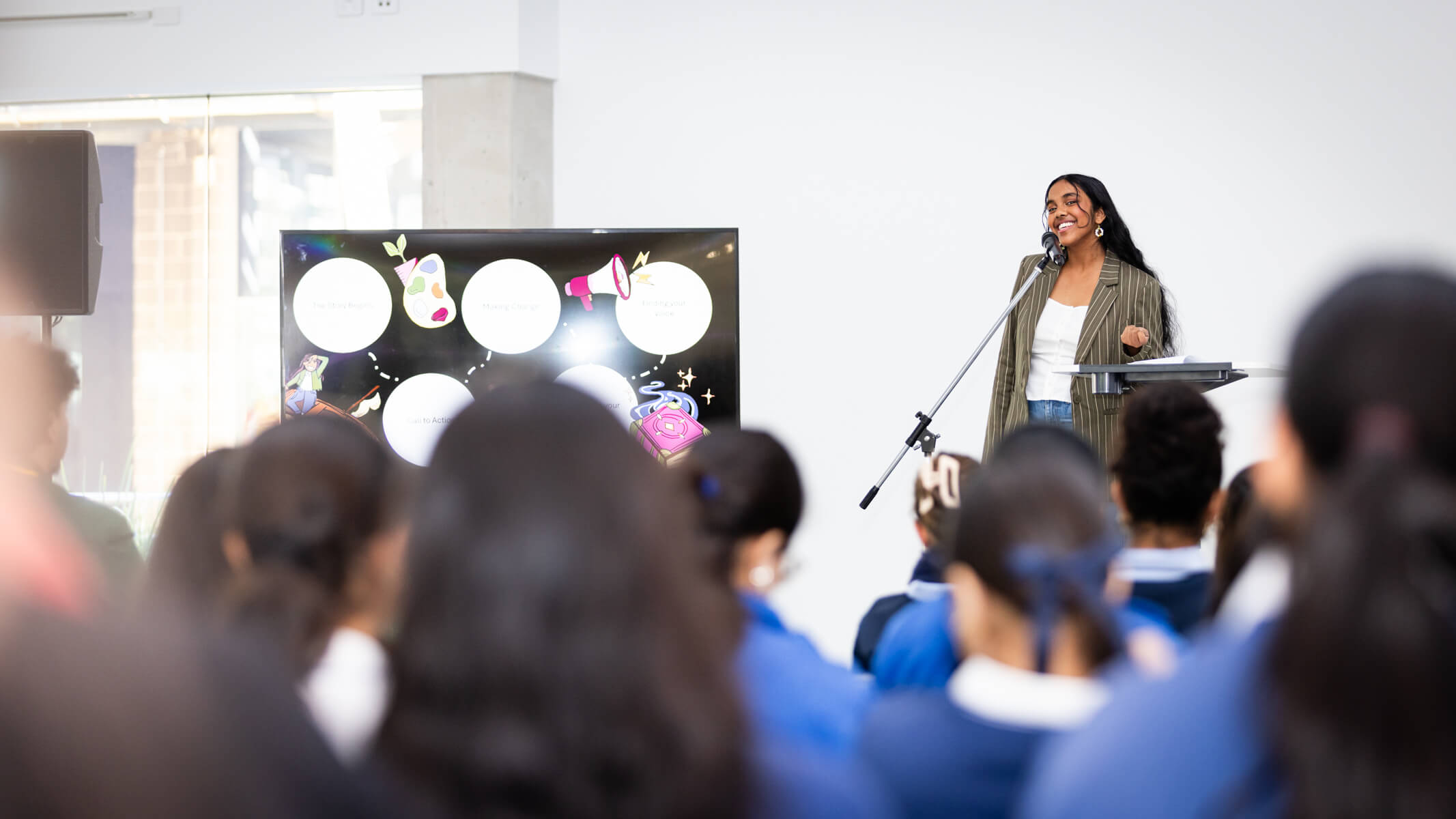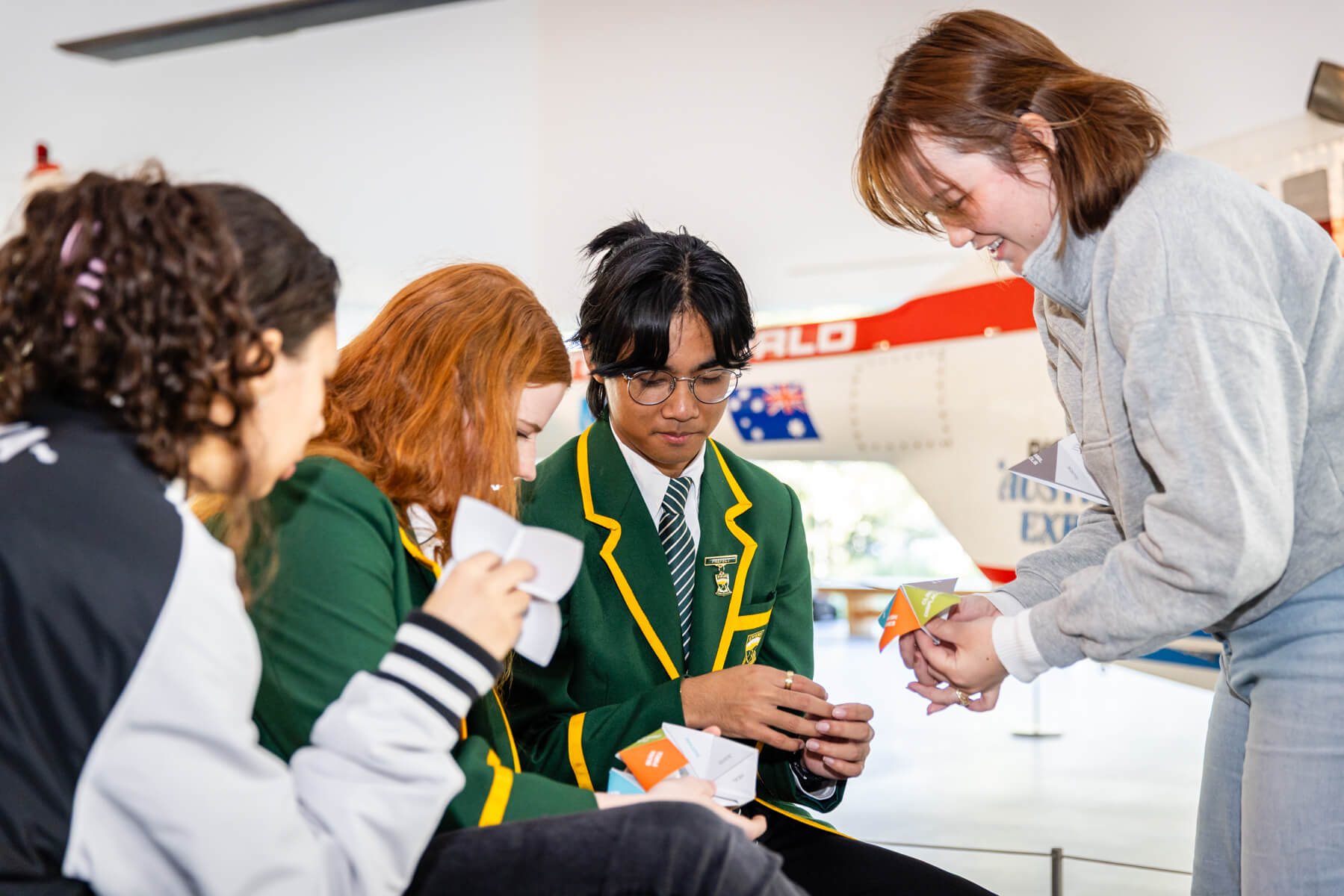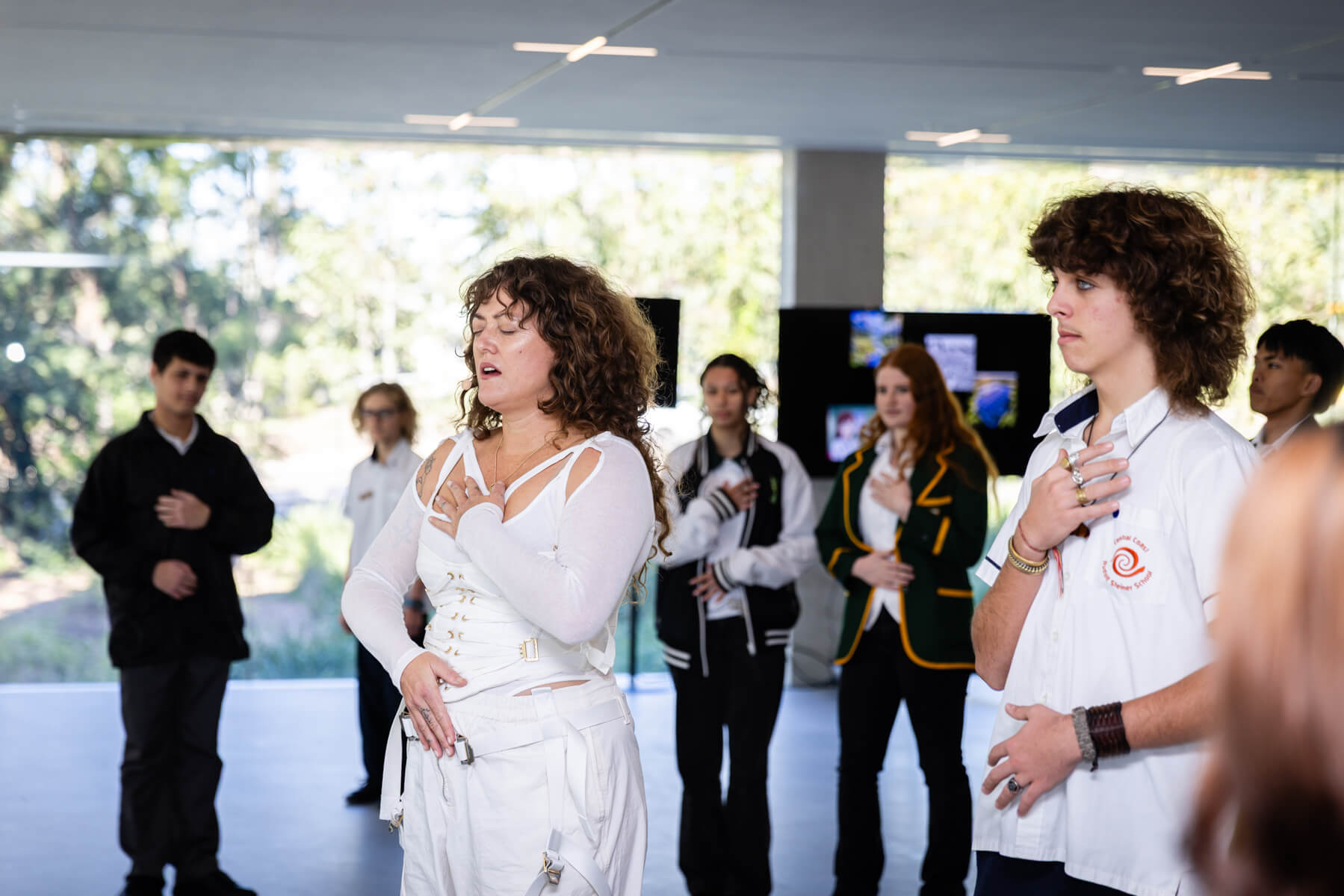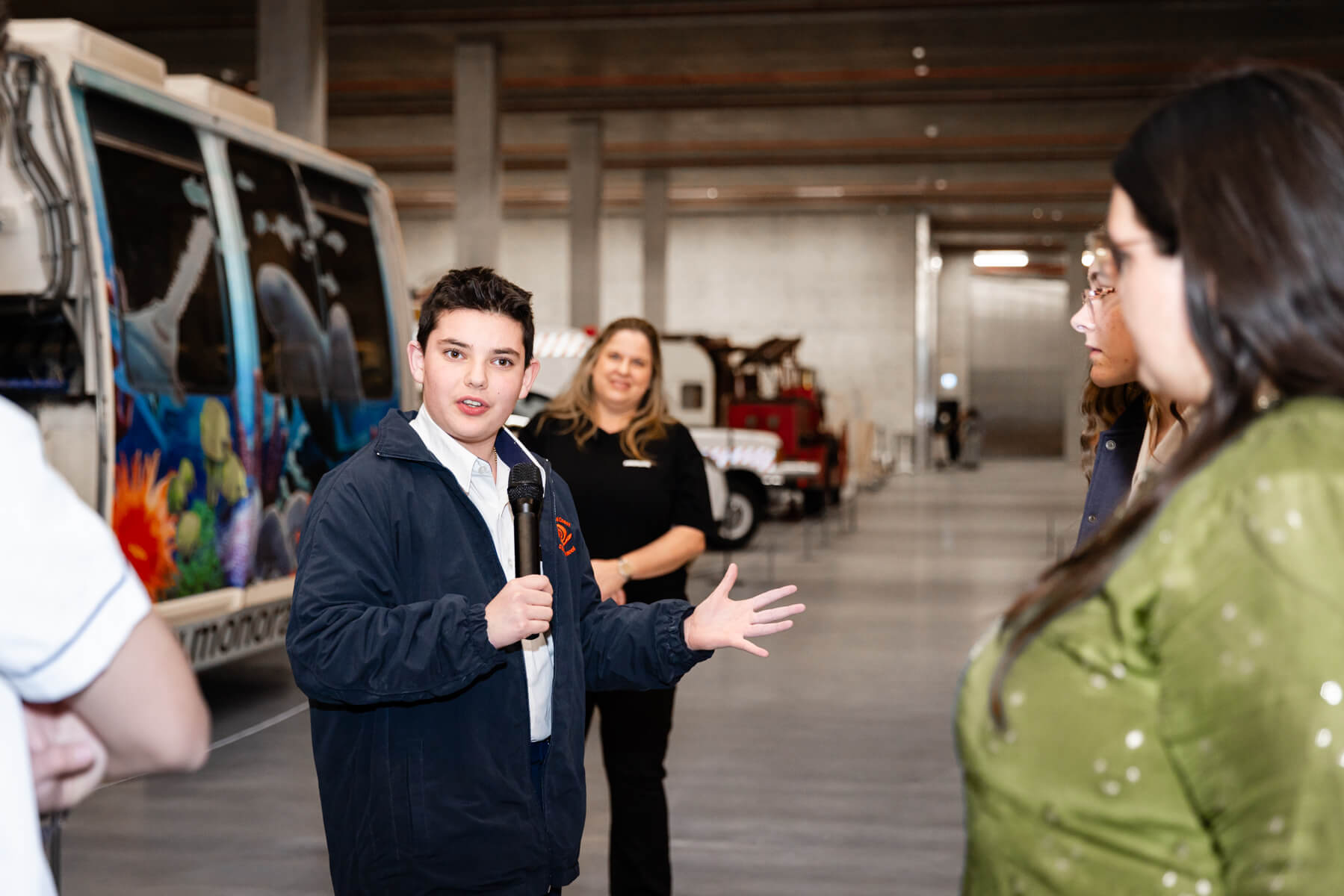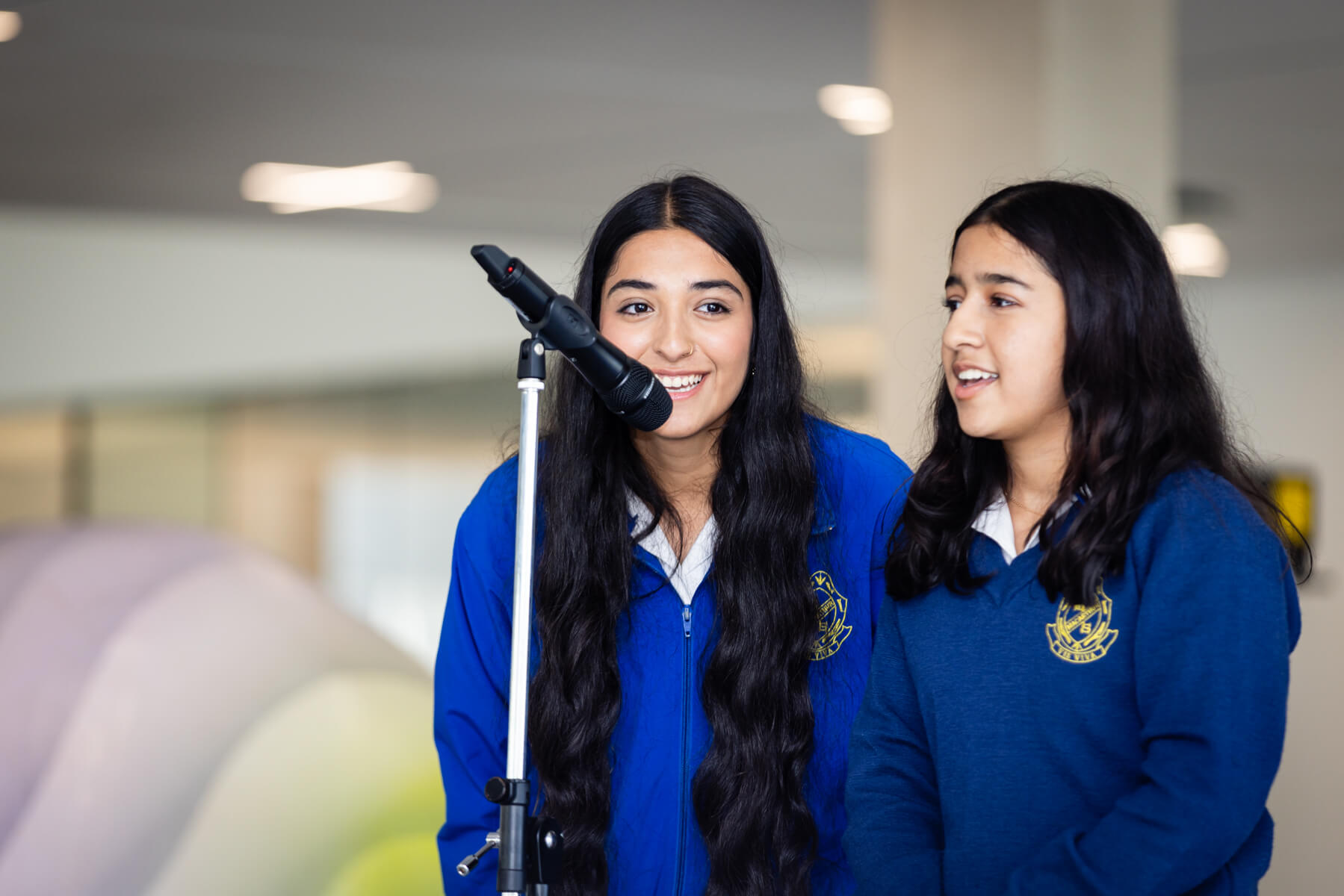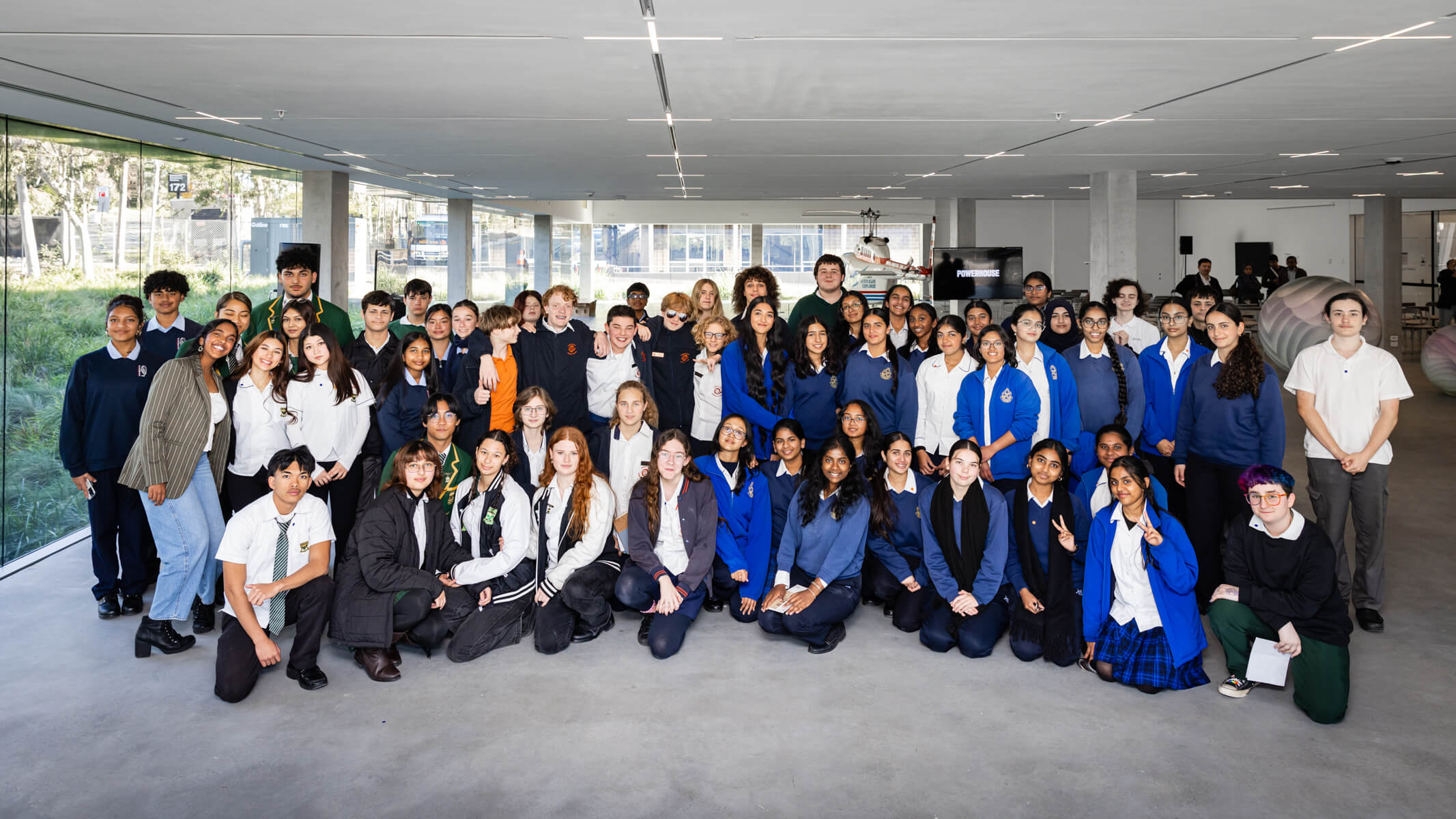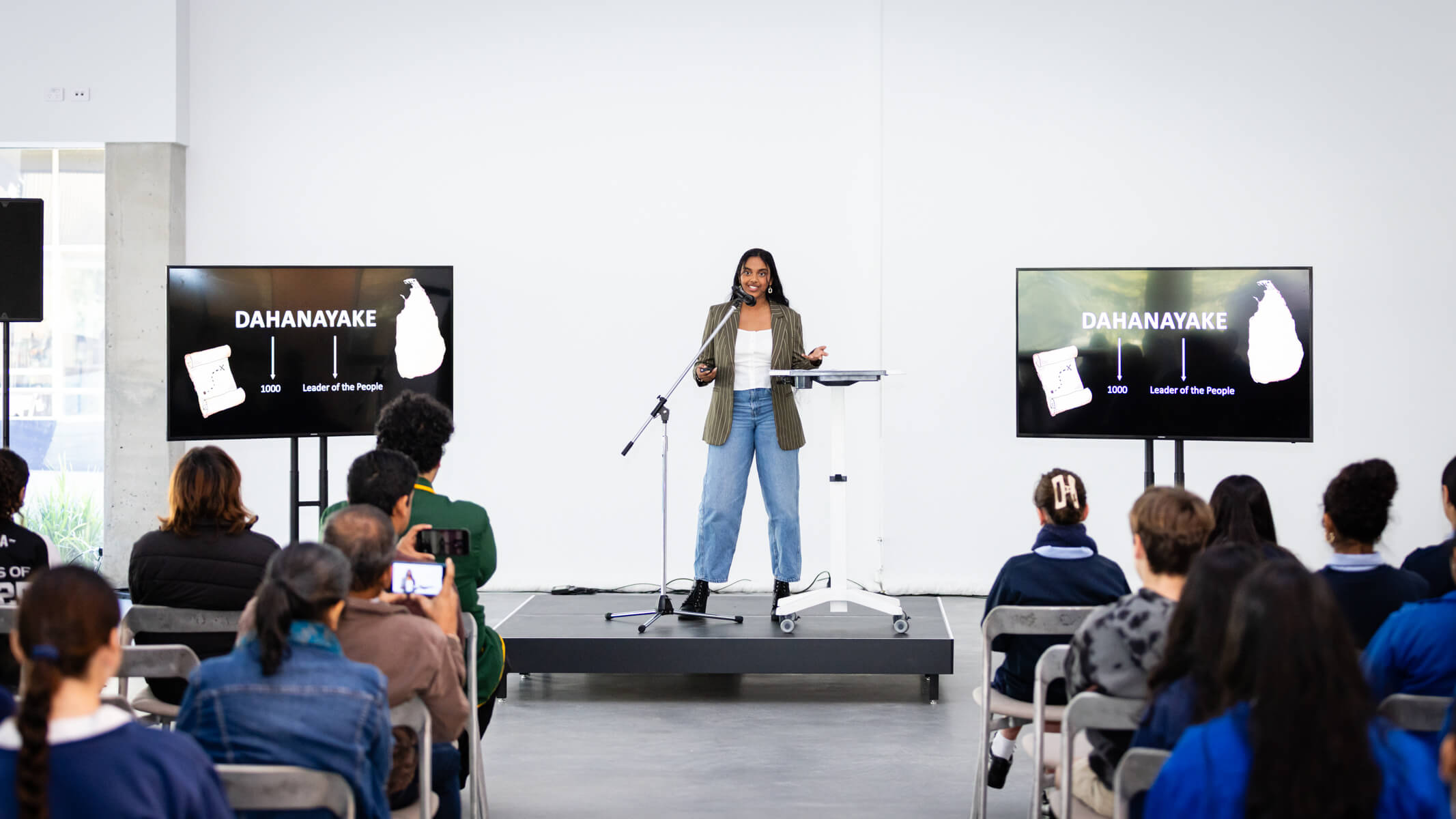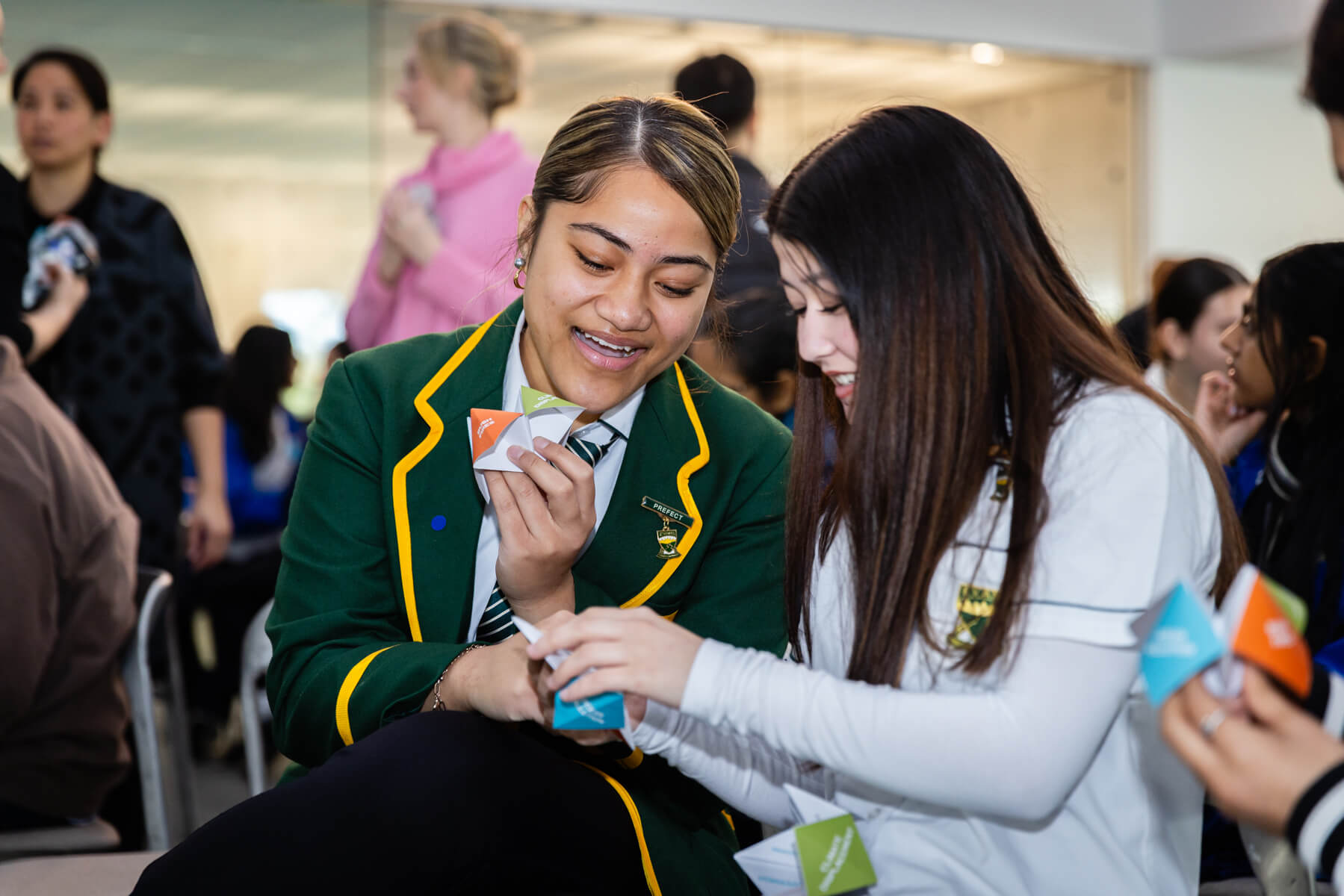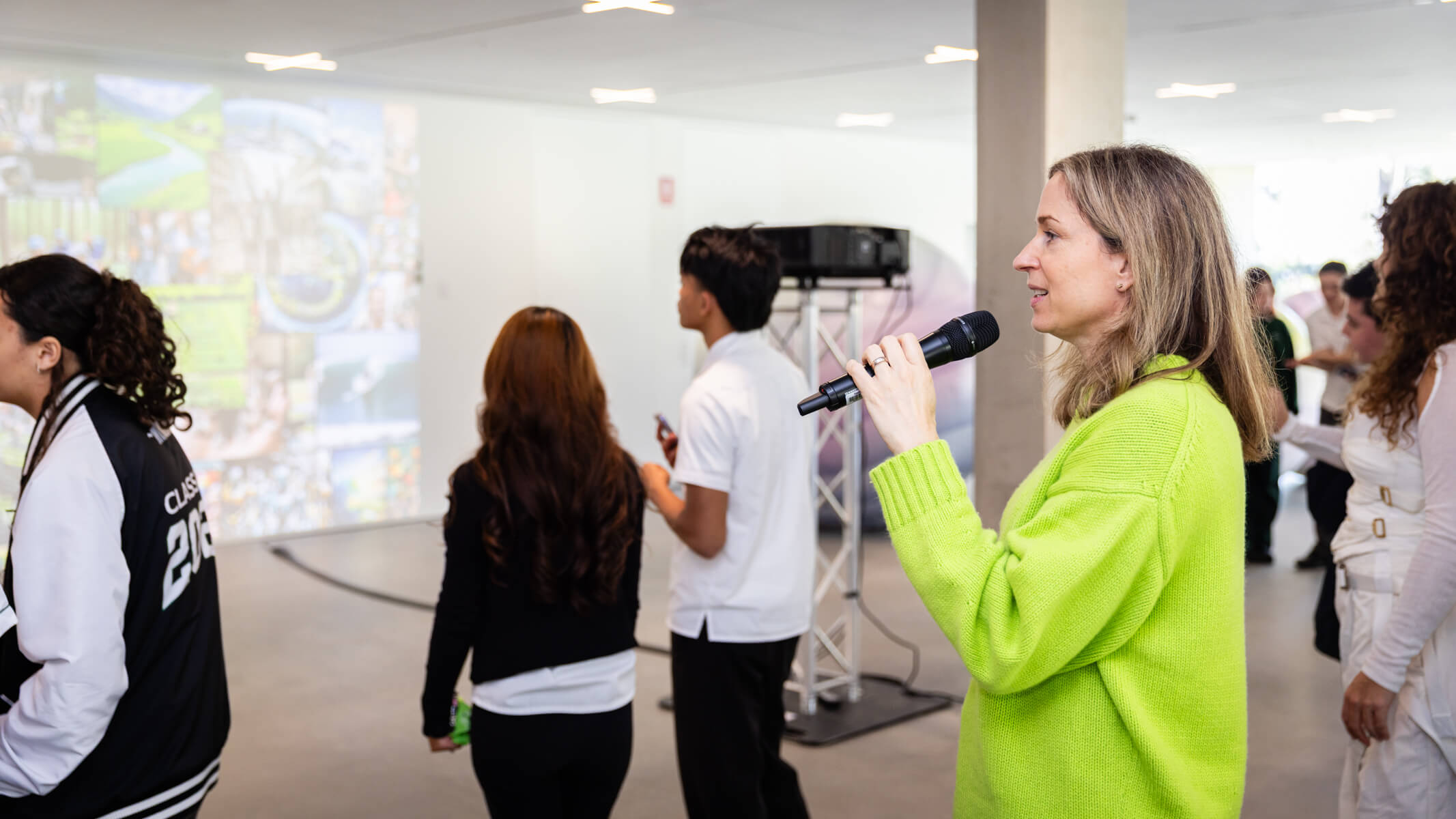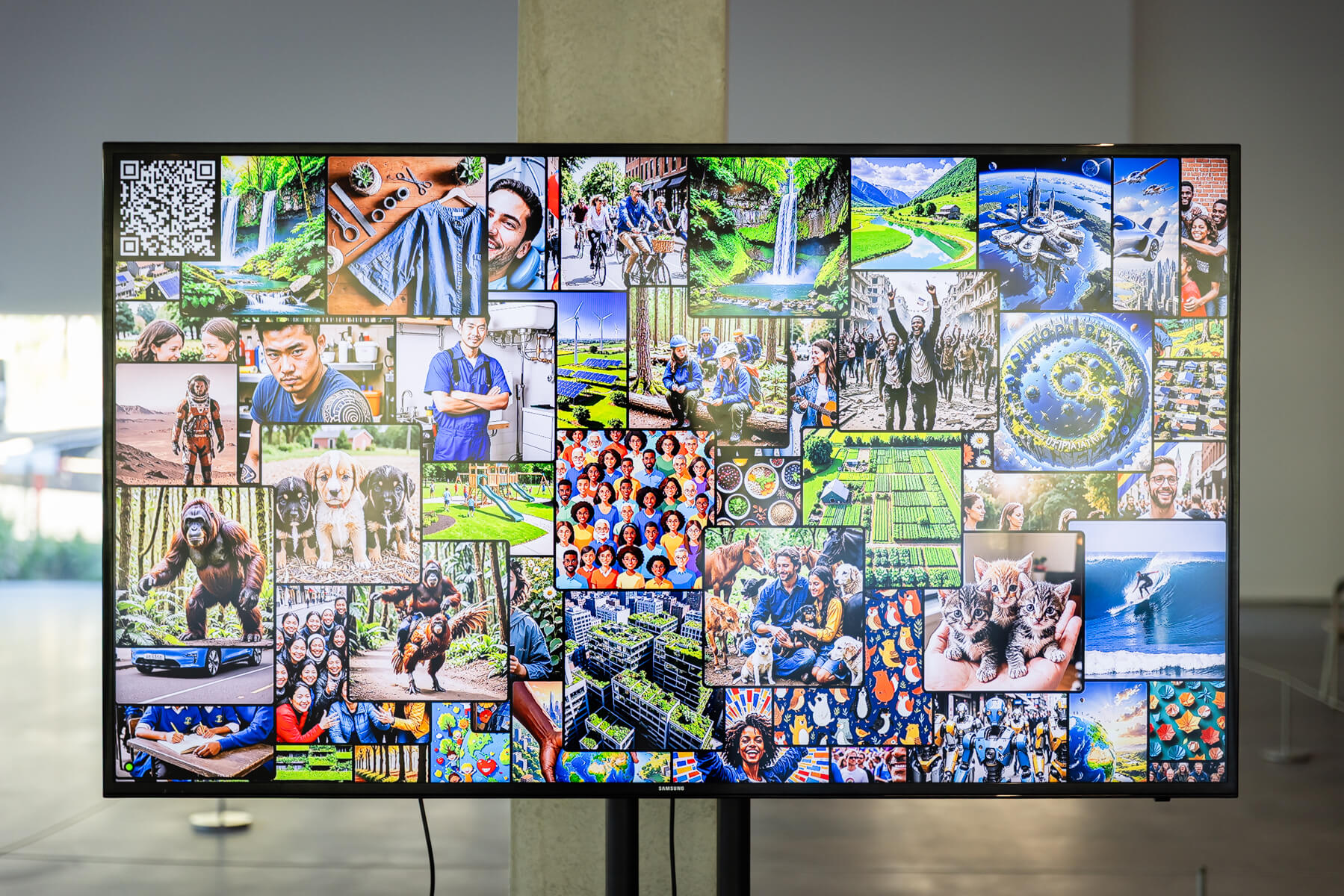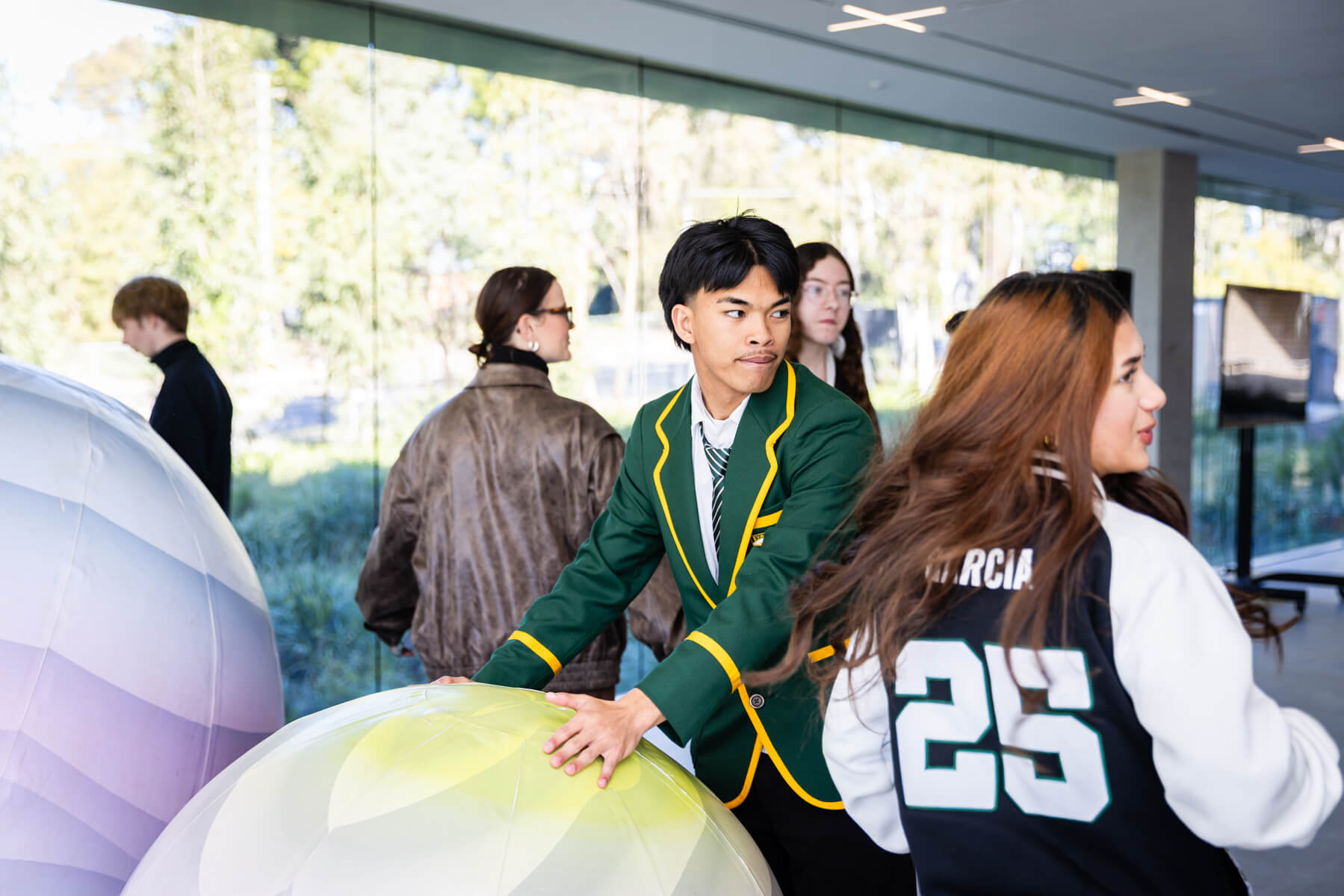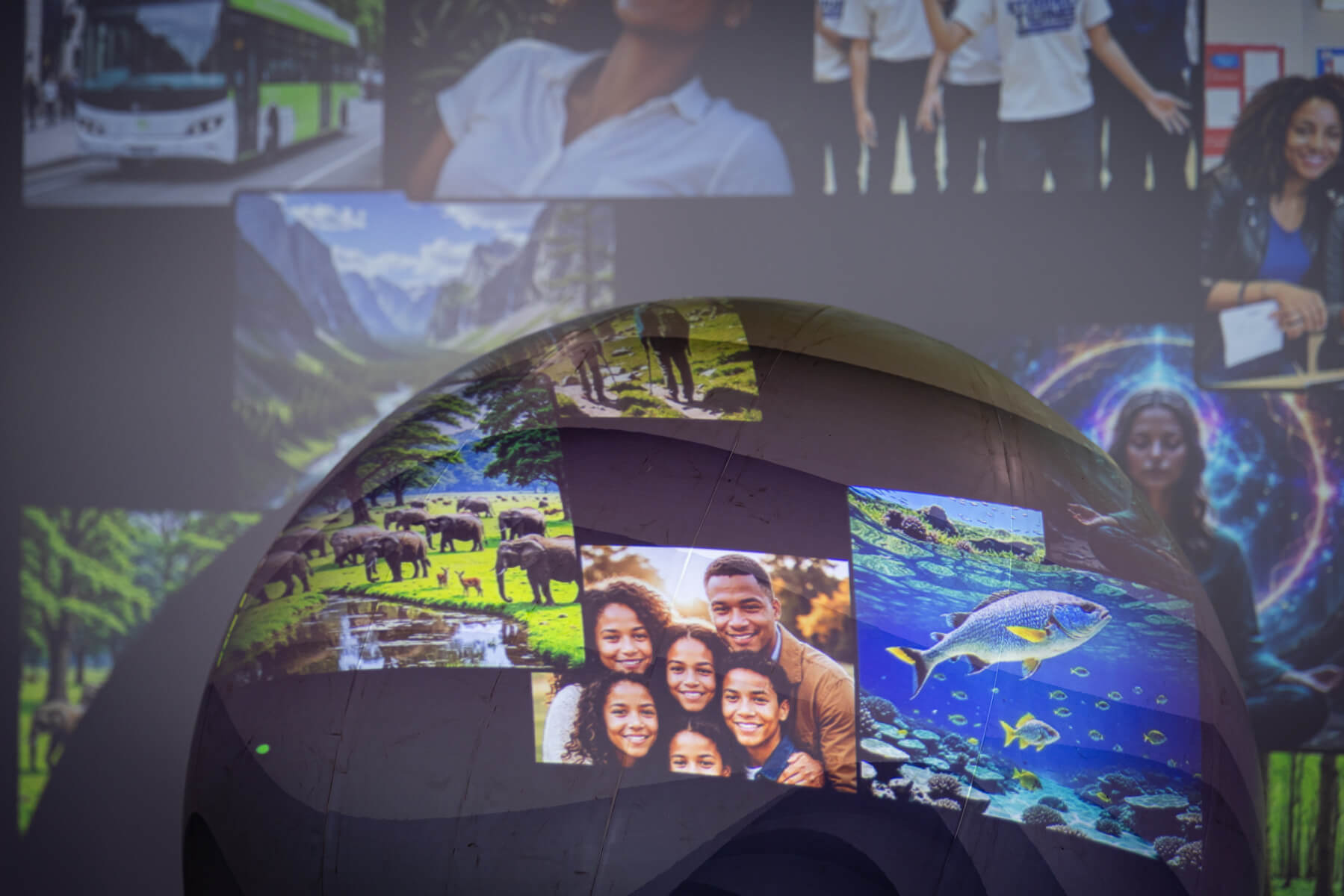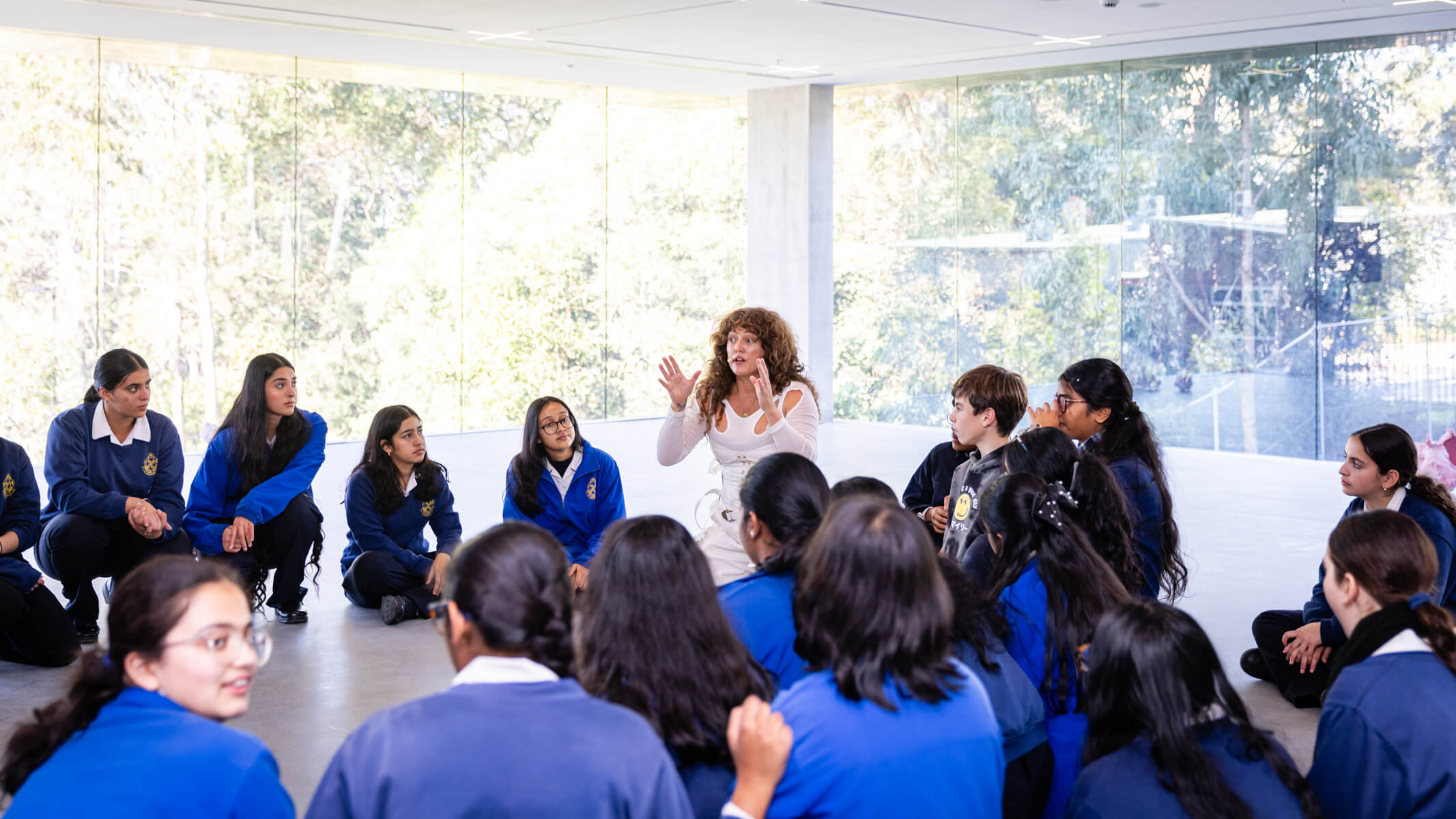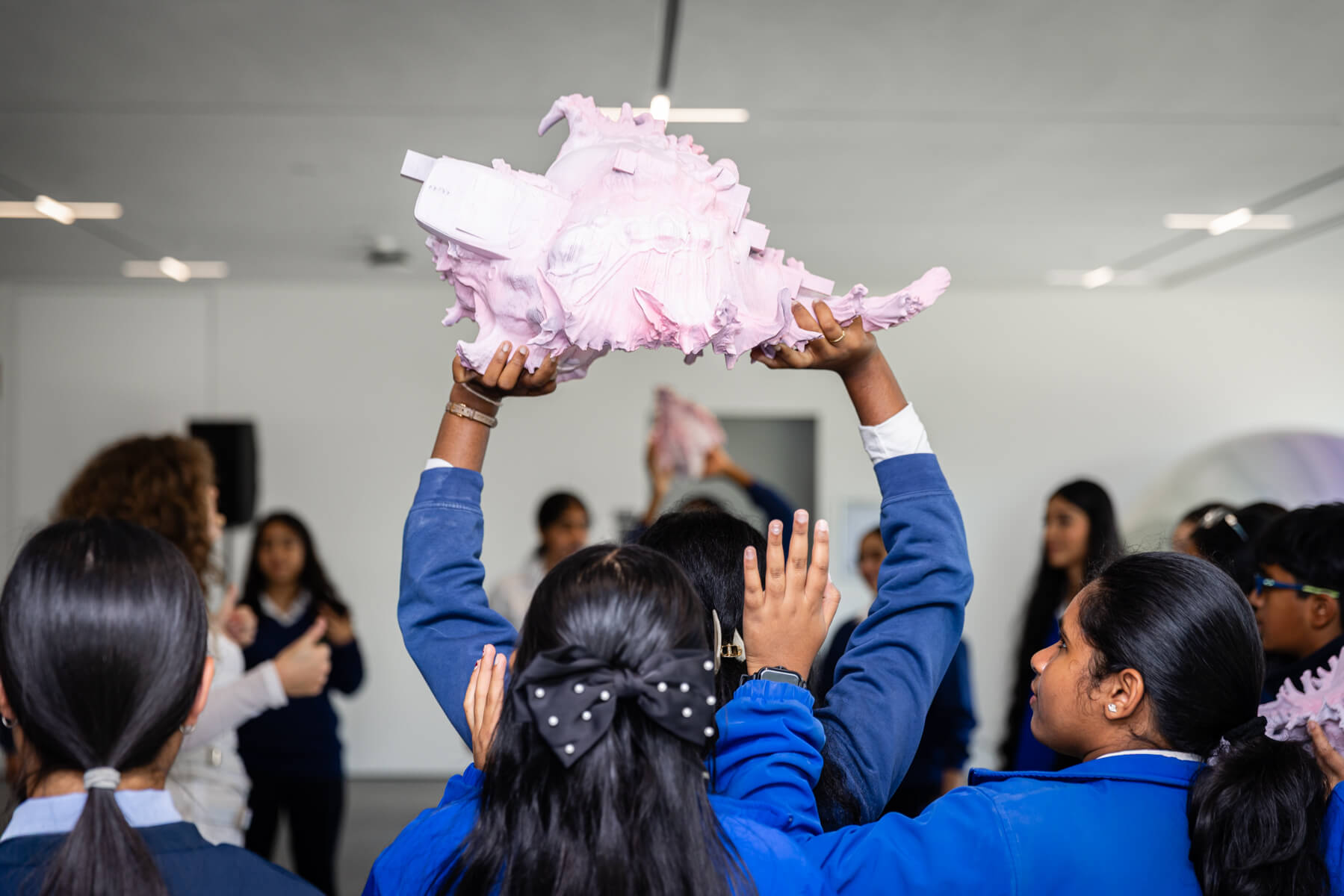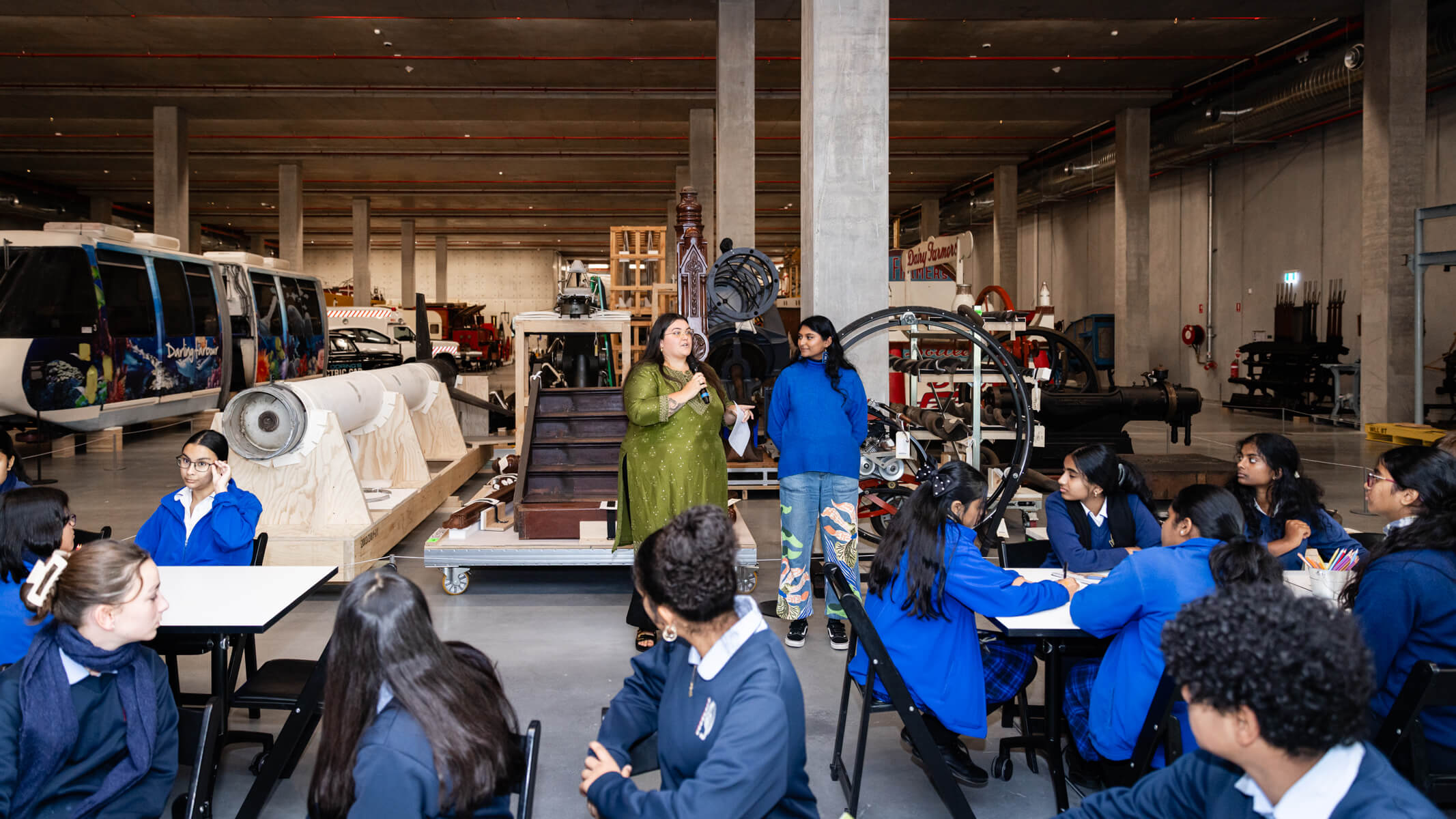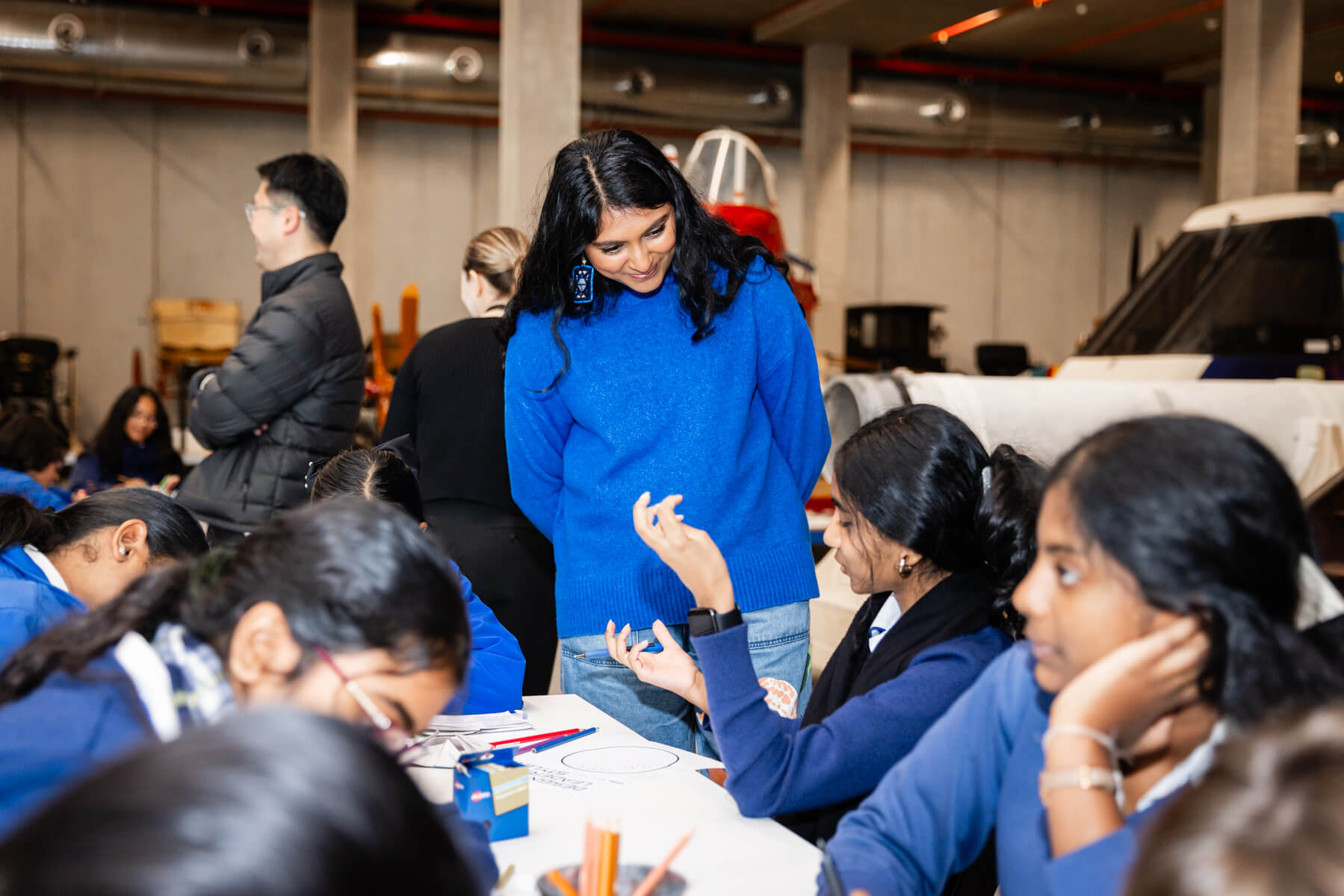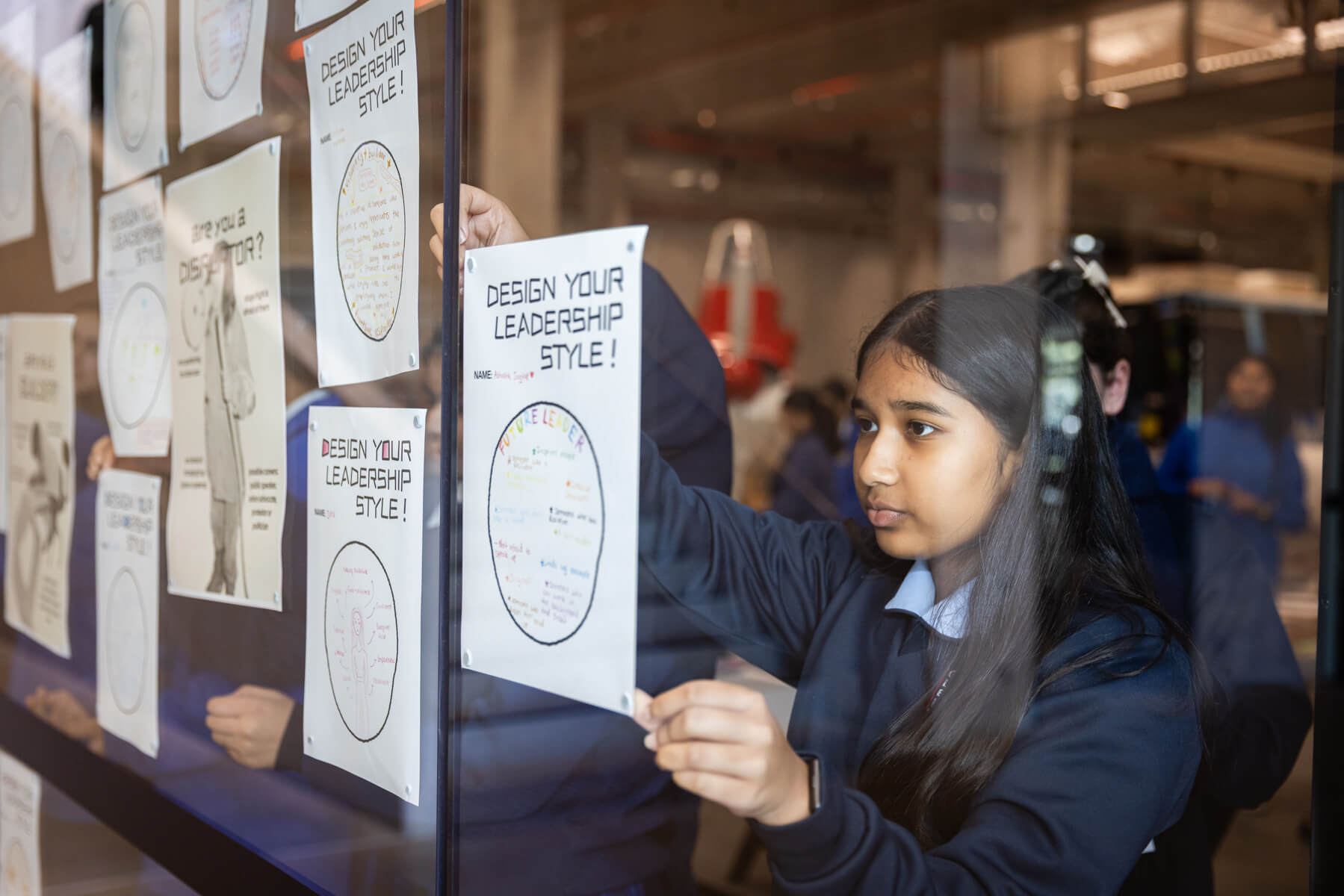On World Environment Day, high school students from across western Sydney and the Central Coast gathered at Powerhouse Castle Hill for the Future Leaders Forum to explore climate leadership. Presented in collaboration with the NSW Department of Climate Change, Energy, the Environment and Water, the forum brought together students to connect and voice new perspectives on climate change and its impacts.
The day opened with a keynote by Yehansa Dahanayake, a youth climate justice advocate, artist, and researcher. Her powerful address encouraged students to embrace their identities and passions as tools for change. Yehansa shared her own leadership journey and how she views the challenge of taking action on climate change.
"It's true that climate change will undoubtedly be the largest issue of our time, and it'll impact every facet of our life and community. But, if climate change is the single greatest challenge facing our planet, I see it as also the single greatest opportunity. It represents a chance to not only fix our climate but to also address different inequalities in our communities"
Using paper chatterboxes to prompt discussion, Yehansa encouraged students to share their ideas on the impacts and challenges of climate change, and ways to address it.
Students participated in two workshops throughout the day. In the first workshop - developed in collaboration between multidisciplinary artist Melissa Gilbert, researcher Dr Julia Scott-Stevenson (UTS) and Visualisation Developer Thomas Ricciardiello (UTS Data Arena) - students used generative AI to co-create visions of desirable climate futures. This hands-on session blended performance, movement, and technology, allowing students to ground themselves in the moment while imagining the future they want and the roles they might play.
The second workshop, developed and presented by National Director of the Australian Youth Climate Coalition Grace Vegesana and journalist Phoebe McIlwraith, guided students through a reflective process to identify their unique leadership roles, and how these may evolve over time.
Students moved among the incredible Powerhouse collection as they explored where they stood on the spectrum of various leadership and climate topics. Whether storytellers, visionaries, or bridge-builders (or a blend of many different archetypes), the group examined how diverse approaches contribute to systemic change.
The Forum concluded with a powerful closing session where students were invited to the microphone to share any thoughts or reflections. This ‘open mic’ format allowed many enthusiastic students to step into the spotlight, amplify their voice and opinions, and show support and solidarity with their fellow forum participants.
"This opportunity has really helped my mindset and allowed me to see so many different people, so many different mindsets, personalities, and traits. Everyone has so many different thoughts, but at the end of the day coming together is what is really going to change the world. It made me realise the future really does start with us."
The Future Leaders Forum sparked meaningful conversations among the students and encouraged them to see themselves as agents of change. Through storytelling, collaboration, and creativity, the event highlighted the power of youth leadership in shaping a more just and sustainable future.
